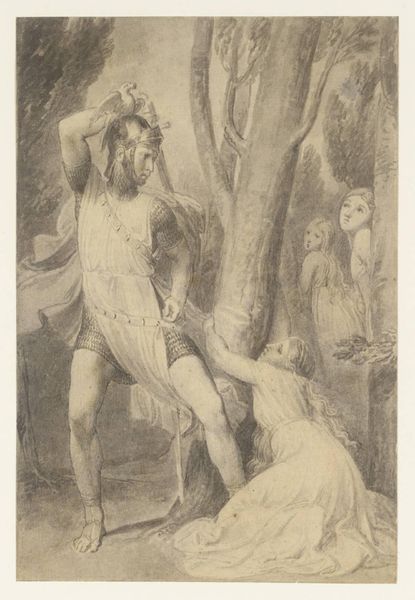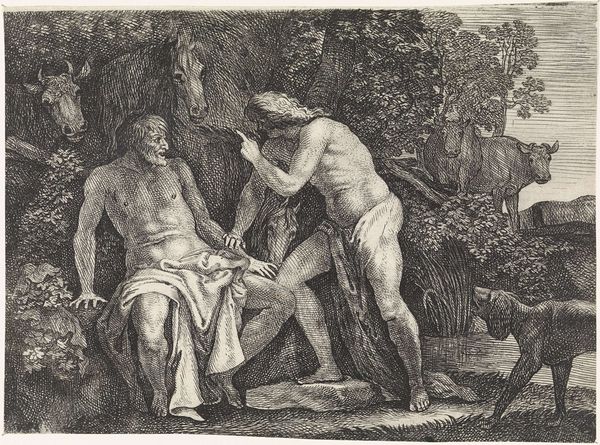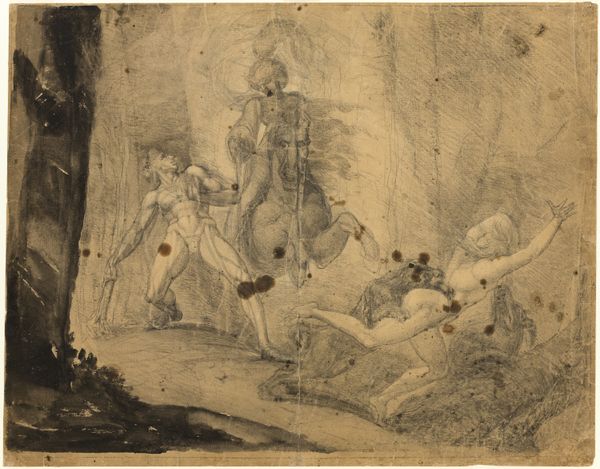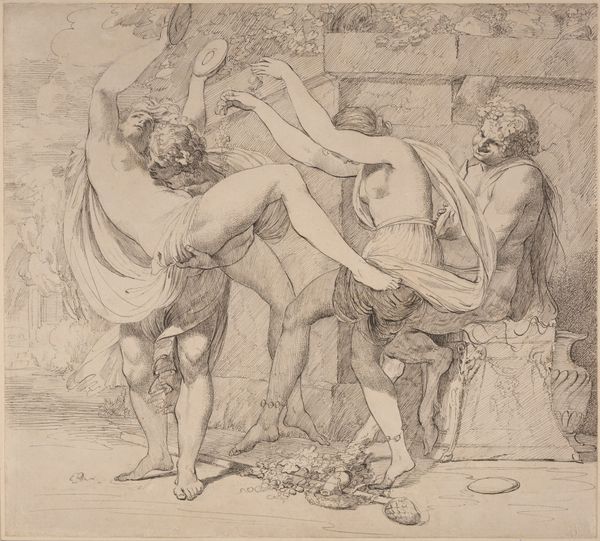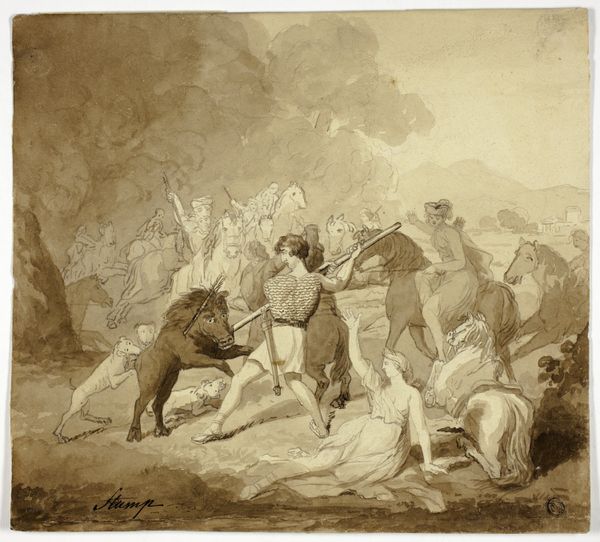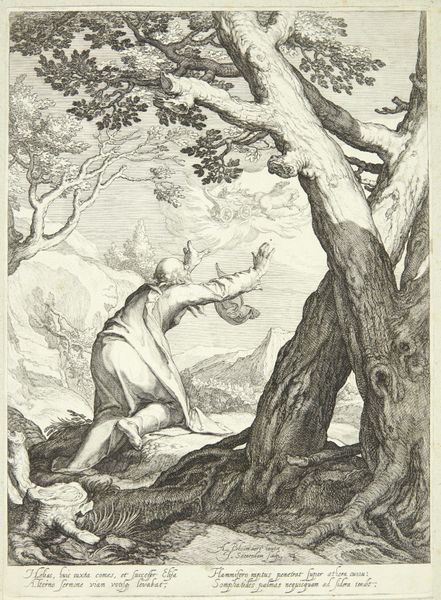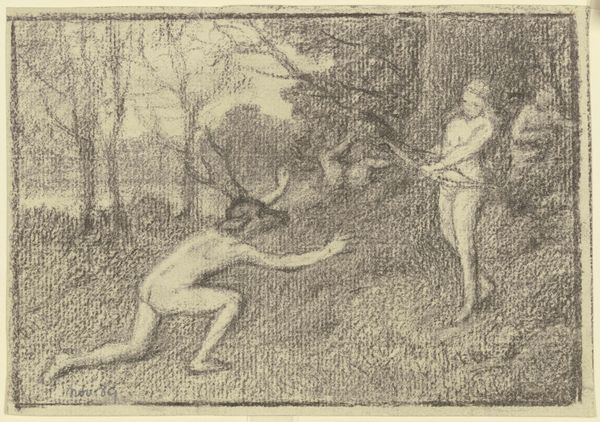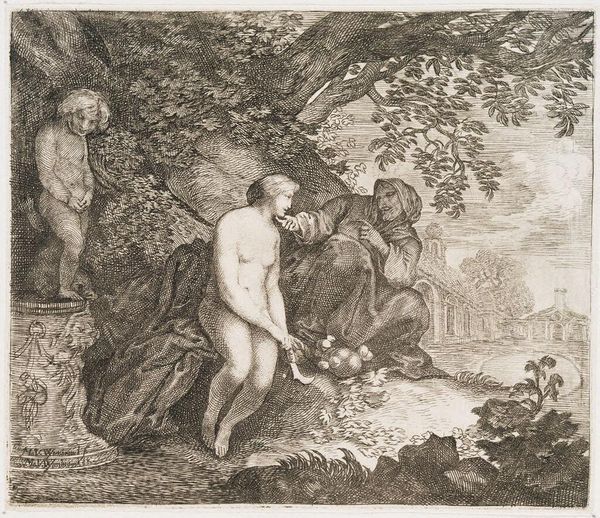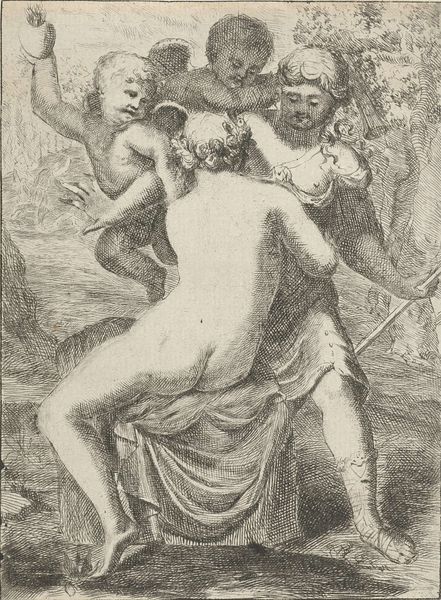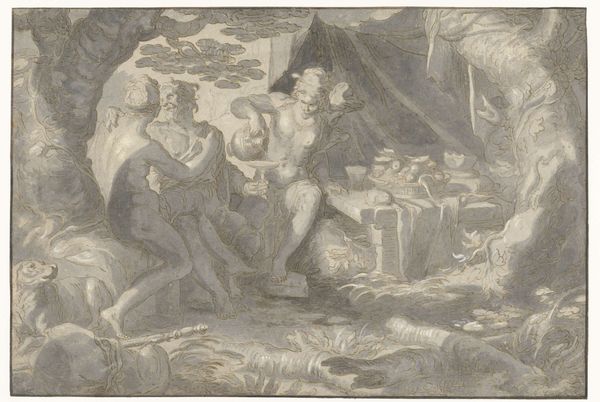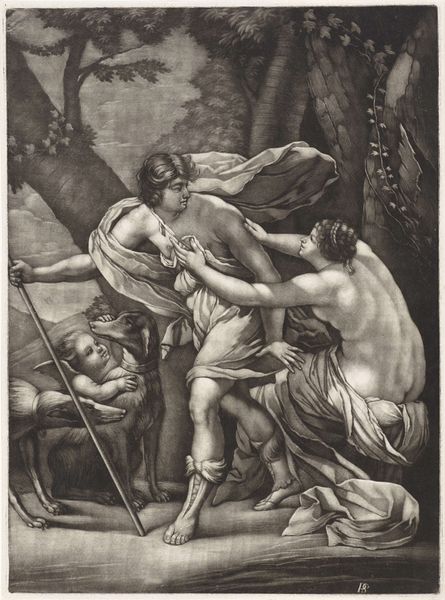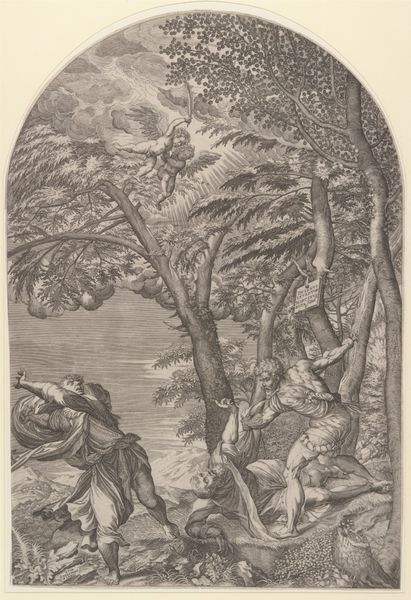
painting, oil-paint
#
figurative
#
painting
#
oil-paint
#
landscape
#
figuration
#
oil painting
#
romanticism
#
history-painting
Copyright: Public Domain: Artvee
Editor: Thomas Sully's oil painting, "Saving the Life of Friday," really strikes me with its raw energy. The brushstrokes are so loose, and the figures almost seem to blend into the landscape. It feels frantic, like we're right in the middle of the action. What do you see in this piece? Curator: I see a powerful commentary on colonialism and the "civilizing mission" often used to justify it. "Saving the Life of Friday" depicts a key scene from Daniel Defoe’s "Robinson Crusoe," but through Sully's lens, we can interrogate the power dynamics at play. Note the pose of Crusoe, shielding Friday – it suggests a paternalistic protection, a relationship of inherent inequality masked as benevolence. Editor: I hadn't thought about it that way. So, it's not just an adventure story? Curator: Precisely. Consider how Friday's depiction reinforces the stereotype of the "noble savage," perpetually needing the guidance and intervention of the European colonizer. Sully, whether intentionally or not, perpetuates a problematic narrative. The romantic landscape, seemingly wild and untamed, also symbolizes the colonizer's desire to conquer and control nature and its inhabitants. How does the painterly style further underscore this? Editor: The blurry details almost suggest a dreamlike state or perhaps highlight the subjective experience of Crusoe himself? It’s not necessarily a realistic portrayal but a dramatized memory with his perspective. Curator: Exactly. The Romantics weren't aiming for pure realism; they explored emotional truths. Sully, though, reflects and perhaps subtly critiques the narratives that uphold colonialism by representing the historical biases and assumptions present during that time. Editor: This makes me see the painting in a completely different light. I'll definitely have to revisit my understanding of "Robinson Crusoe" now too. Curator: And that's the point, isn't it? To challenge perspectives, unpack narratives, and strive for more equitable interpretations of art and the history it reflects.
Comments
No comments
Be the first to comment and join the conversation on the ultimate creative platform.
